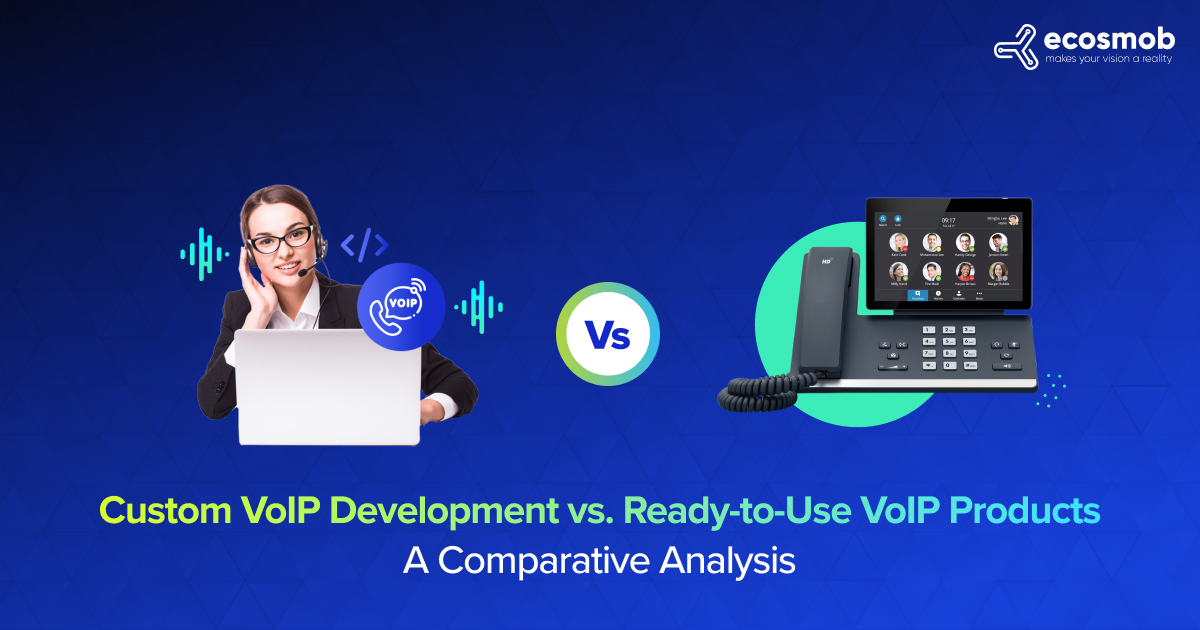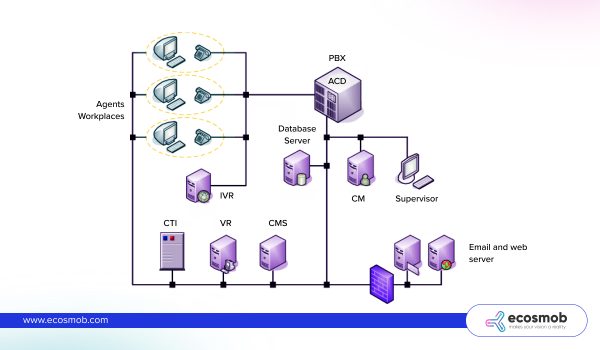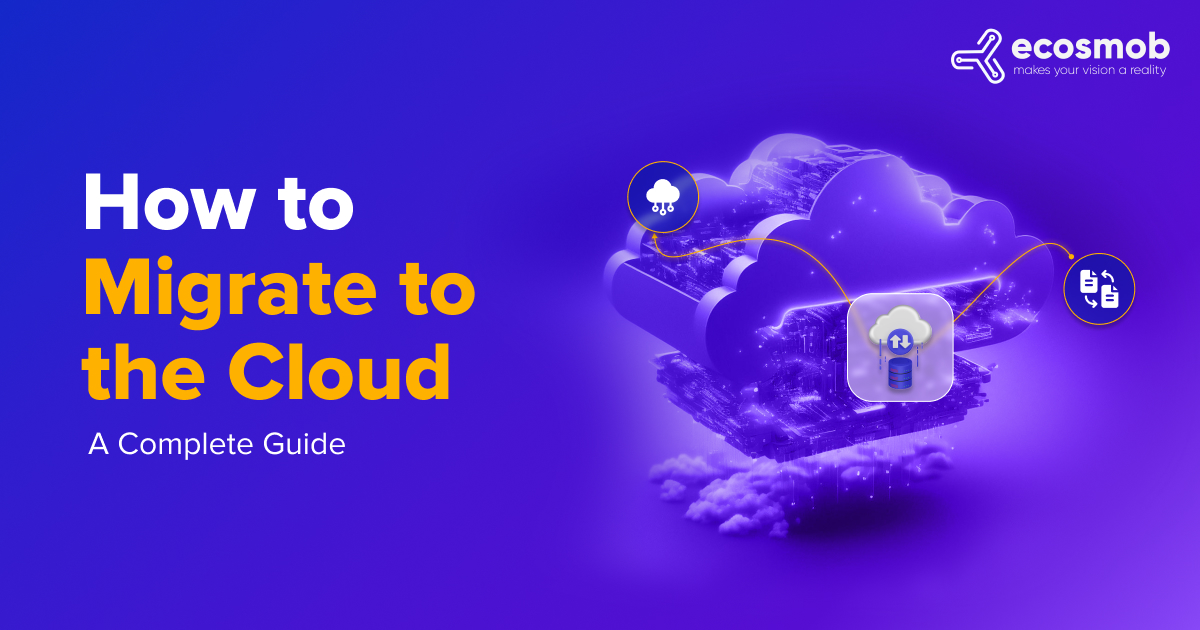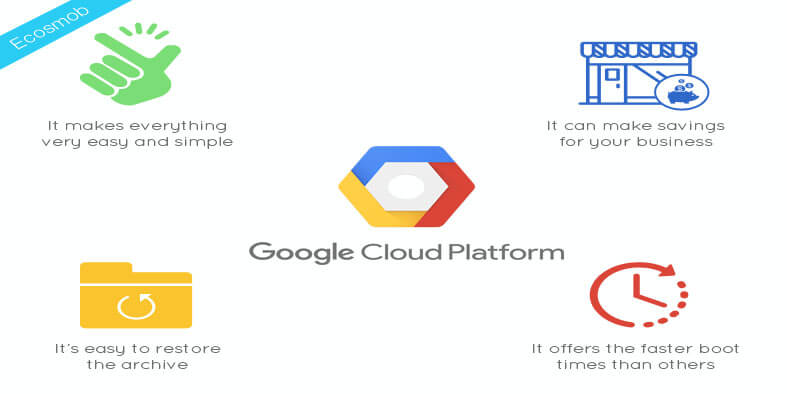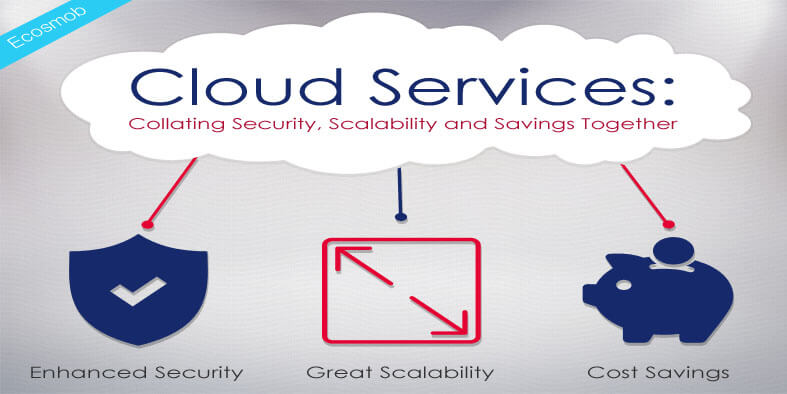The cloud contact center significantly advances how companies interact with their customers. These systems, which use cloud technology, provide a scalable, adaptable, and affordable replacement for traditional contact center infrastructure. By comprehending the architecture behind cloud contact center solutions, companies use these cutting-edge technologies, providing unmatched customer support while preserving efficiency and cutting expenses associated with operations.
According to market research, cloud-based contact centers are projected to grow at a compound annual growth rate (CAGR) of 26.1% from 2022 to 2027, expanding from USD 17.1 billion to USD 54.7 billion. The increasing demand for personalized and efficient customer interactions primarily fuels this growth. Additionally, the rising trend of omnichannel contact centers, which enhances the availability of various communication channels, further boosts the adoption of cloud-based contact center solutions.

In this blog, we will delve into the intricacies of Cloud Contact Center architecture and its benefits, offering insights into how this technology is reshaping customer interaction paradigms.
Do you want to dive into the future with cloud contact centers?
Let’s deep dive!
What is a Cloud-based Contact Center?
Before moving further, Let’s understand what a cloud-based contact center is. In simple words, it’s a unified, centralized platform that handles customer communications via phone, text, email, and social media. Cloud contact centers, hosted online instead of traditional on-premises versions, provide unmatched flexibility, scalability, and cost-effectiveness. Moving away from traditional call center design and toward cloud solutions, companies may use contact center cutting-edge technology without investing heavily in physical infrastructure.
Cloud Contact Center Architecture Components
A cloud contact center’s architecture aims to maximize customer satisfaction and service agent productivity. It is made up of a few essential parts, each of which is a pre-requisite for the contact center’s smooth operation:
- Automatic Call Distributor (ACD): The Automatic Call Distributor (ACD) is the central component of the contact center. It assigns incoming calls to the most suitable agent according to preset standards such as client priority, skillset, and availability.
- Internet Protocol Private Branch Exchange (IP PBX): VoIP solutions are made possible by IP PBXs or Internet Protocol Private Branch Exchange, the foundation for internal and external communication. This technology enables seamless call transfers, conferencing, and other features by integrating with the ACD.
- Enterprise Contact Center Software: This enterprise contact center solutions suite includes tools for agent management, customer relationship management (CRM), analytics, and reporting. It provides a unified interface for agents to access customer data, manage interactions, and deliver personalized service.
- VoIP Solutions: VoIP technology is vital in the internet voice communication process. VoIP solutions guarantee excellent, economic voice services in cloud contact centers, replacing conventional telephone networks.
- Omnichannel Routing: Modern contact centers must manage interactions smoothly across several channels. Customer support is guaranteed to be constant regardless of the method of communication—phone, email, chat, or social media—thanks to omnichannel routing.
- Interactive Voice Response (IVR): Interactive voice response, or IVR, systems direct users to the right VoIP service provider representative or through self-service alternatives, increasing productivity and client satisfaction.
How Do Cloud Contact Center Platforms Work?
An Interactive voice response system (IVR) and an automated call distributor (ACD) are two examples of the technological features of a cloud-based contact center. In addition, several tools and apps are included, including analytics, agent management, call routing, and more. A customer care worker may manage inbound and outgoing client conversations using these solutions, which function as a centralized hub over the Internet. Communication options are available through the cloud contact center, including chat, email, web, Facebook Messenger, WhatsApp, and many more.
Benefits of a Cloud Contact Center
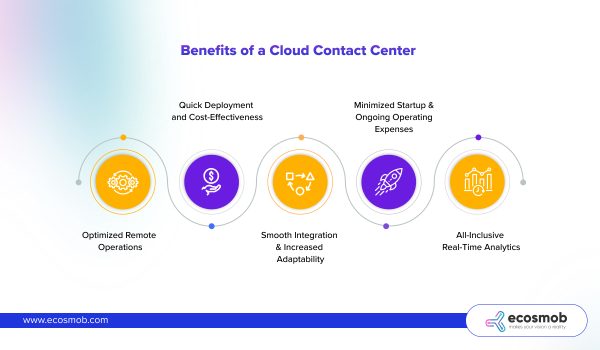
The next phase in call center design is heralded by integrating cloud technologies into contact center infrastructure, which enables previously unheard-of flexibility and scalability. With cutting-edge features like VoIP, IP PBX solution, and automated call distributors, cloud contact centers guarantee uninterrupted corporate operations no matter what happens outside the office.
Let’s focus on the strategic advantages of a contact center for companies looking to achieve rapid growth and operational efficiency.
Optimized Remote Operations
By utilizing cloud contact center architecture, companies may overcome geographical constraints and assemble a diverse team of agents working from home for incoming and outgoing calls. This concept, which rose to popularity during the pandemic, removes location-based barriers to talent and guarantees continuous company continuity. The cloud contact center’s real-time reporting capabilities, flexibility with several operating systems and devices, and transparency in customer satisfaction measures improve agent productivity.
In addition, call center agents’ desire for remote work, linked to time and travel cost reductions, creates a win-win situation for businesses and workers.
Quick Deployment and Cost-Effectiveness
In contrast to traditional on-premise call centers, which require significant capital expenditures for hardware and a specialized IT staff, cloud contact centers can be up and running in weeks. This quick deployment—eliminating the need for physical hardware—speeds up the return on investment. In addition, the cloud contact center’s scalability allows it to adjust to varying call volumes, guaranteeing cost-effectiveness by matching costs with actual usage.
Smooth Integration and Increased Adaptability
With built-in API design, cloud contact center solutions effortlessly sync with popular corporate apps (including WhatsApp, Salesforce, and Zoho). It demonstrates their exceptional integration possibilities. This adaptability makes it easier to quickly integrate new or current CRM or ticketing systems in a way that best suits the needs of the business.
Minimized Startup and Ongoing Operating Expenses
The costs of real estate, IT workforce, network infrastructure, and software licensing are decreased using a cloud contact center. The cloud model’s subscription-based pricing, which is far less expensive than the establishment fees of traditional contact centers, further enhances its cost-effectiveness. Cloud providers often handle software upgrades and troubleshooting to lessen operational responsibilities.
All-Inclusive Real-Time Analytics
Comprehensive analytics are provided by cloud-based contact center software, allowing for careful observation of call parameters, agent effectiveness, and customer satisfaction. These realizations are essential for strategies of continual improvement aimed at raising the caliber and effectiveness of services.
Cloud contact centers provide essential benefits that guarantee company continuity in various scenarios by utilizing Cloud Contact Center Solutions and Contact Center Infrastructure.
Also Read: Contact Center Software for International Call Centers
Expand Your Cloud-Based Contact Center with Ecosmob
Ecosmob’s accolades speak for themselves—it is among the top contact center solutions in the world.
Contact centers of the future will be cloud-based. Given all the advantages of a contact center, you can go right with migrating your call center operations to the cloud. Finding contact center software that meets your organization’s goals, financial constraints, and technological requirements takes time and effort.
The following helpful advice will help you with your selection process:
- Align with Business Goals: When evaluating Cloud Contact Center Solutions, prioritize being clear about your goals. Choose between concentrating on outbound contacts to increase sales or on inbound efforts to improve customer happiness.
- Determine the Type of Cloud Solution: To choose between an SMB or Enterprise-class cloud-based contact center solution, evaluate your company’s objectives. Enterprise solutions provide better availability, scalability, and reliability than SMB solutions, which handle just a few hundred agents. Even SMB companies should consider an enterprise solution for improved scalability and dependability.
- Examine Supervisor Dashboards and Real-Time Analytics: Supervisor dashboards, which analyze team performance in real time, are crucial tools in cloud-based contact centers. Make sure supervisors can provide timely support to their team members using these tools.
- Evaluate the customer service quality: Problems will inevitably arise, but reliability is essential. To reduce downtime and financial loss, assess potential suppliers according to how well they respond to inquiries and how efficient their customer service is. Examine client testimonials to determine the dependability and caliber of the provider’s assistance.
In a Nutshell,
Incorporating Cloud Contact Center Architecture process is enhanced by Contact Center Solution Architecture insights, highlighting the all-encompassing advantages and strategic importance of Cloud Contact Center Solutions. When you’re ready, Ecosmob offers an inexpensive contact center solution that is simple to set up and integrates all the capabilities needed to raise service standards. Get in touch with us to find out more.
Ready to accelerate growth with Cloud Contact Centers?
FAQs
What is the cloud contact center architecture?
The architecture and layout of contact centers that use cloud services as their infrastructure are called cloud contact center architecture. This architecture utilizes cloud-based technologies to manage client interactions effectively.
What distinguishes traditional call center architecture from cloud contact center design?
Automatic call distributors (ACDs) and IP PBX systems are examples of on-premises gear rendered unnecessary by cloud contact center architecture. Instead, it depends on VoIP and cloud-based contact center software for greater flexibility and scalability.
What are the benefits of putting Cloud Contact Center Architecture into practice?
- Scalability: The ability to quickly scale up/down to meet business demands.
- Cost-Effectiveness: Lower the initial outlay for infrastructure.
- Flexibility: Contact center services are available from any location.
- Improved Qualities: Gain from cutting-edge features like omnichannel and analytics.
Could you briefly describe an average Cloud Contact Center Architecture diagram?
A Cloud Contact Center Architecture diagram shows how client interactions go via several components, such as contact center software, VoIP systems, cloud servers, and data storage, and how these components cooperate, providing smooth customer support.
What part does VoIP technology play in the Cloud contact center architecture?
VoIP systems allow voice communication over the Internet and are essential to cloud contact centers. VoIP for contact centers offers call routing and interactive voice response (IVR) capabilities while lowering expenses and improving call quality.



